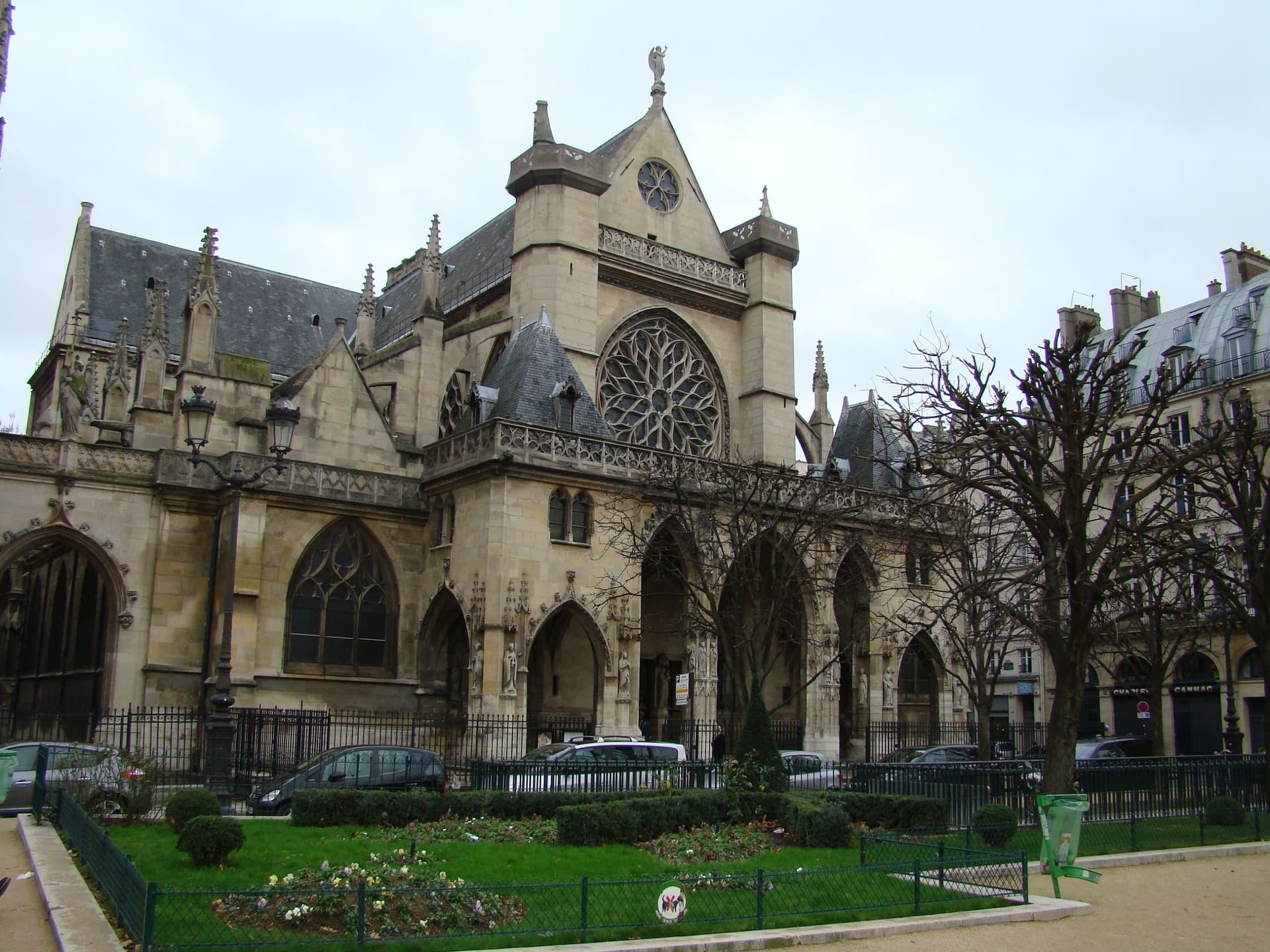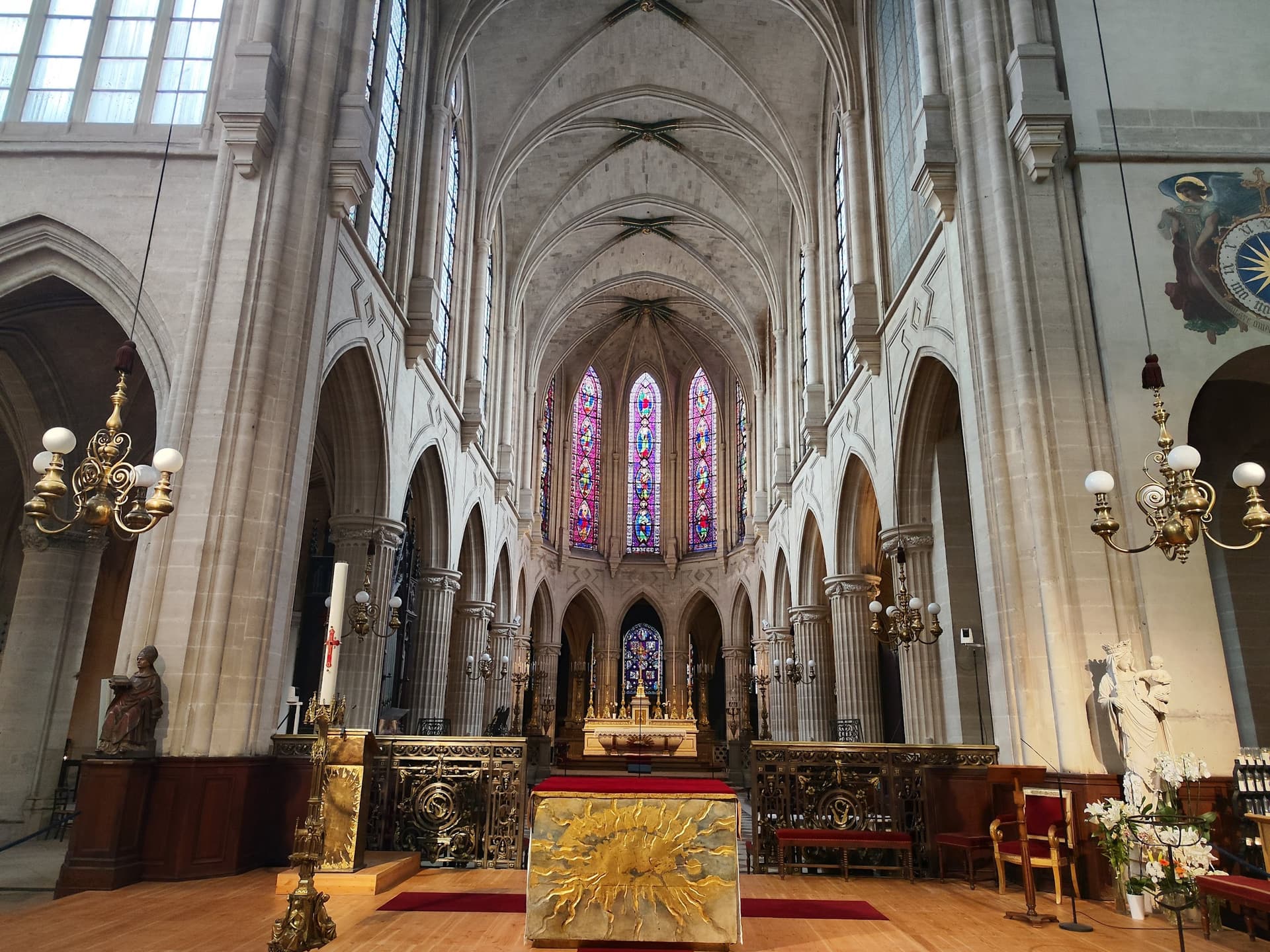Audio GuideSaint-Germain-l'Auxerrois
Gothic religious edifice with striking Renaissance stained-glass windows & intricately carved pews.
Saint-Germain l'Auxerrois is a medieval Catholic church situated in the first arrondissement of Paris, directly opposite the Louvre. Its origins date back to a modest oratory established in the fifth century, evolving over time through various expansions spanning from the twelfth to the sixteenth century. The church is named after Saint Germanus of Auxerre, a medieval bishop and papal envoy who famously met Saint Genevieve, the patron saint of Paris.
The exterior of the church features an intriguing mix of Romanesque, Gothic, and Renaissance architectural styles. Visitors can admire the ornate western portal from the early thirteenth century and a façade adorned with statues of French saints. Also of note is the rare "Boule aux Rats" carved stone motif, one of only four in existence in France. The church boasts two bell towers: the original bell, historically associated with the St. Bartholomew’s Day Massacre in fifteen seventy-two, and a later tower from the nineteenth century, added during the urban redevelopment of Paris under Baron Haussmann.
Inside, a lengthy central nave from the fifteenth century leads to a magnificent choir with grand carved wooden seats commissioned for King Louis the Fourteenth in sixteen eighty-four. An ambulatory guides visitors to several chapels, including the Chapel of the Virgin, which combines medieval sculpture with paintings from the nineteenth century, and the Chapel of Compassion, featuring a Flemish carved altarpiece depicting biblical scenes. The church also contains tombs of distinguished artists and architects associated with the Louvre.
Throughout its history, Saint-Germain l'Auxerrois has served a diverse community, initially catering to residents of the Louvre and, more recently, hosting services for Notre Dame de Paris since the fire. Its deep historical roots, artistic splendours, and varied architecture make it a fascinating spot for those interested in Paris's cultural legacy.




